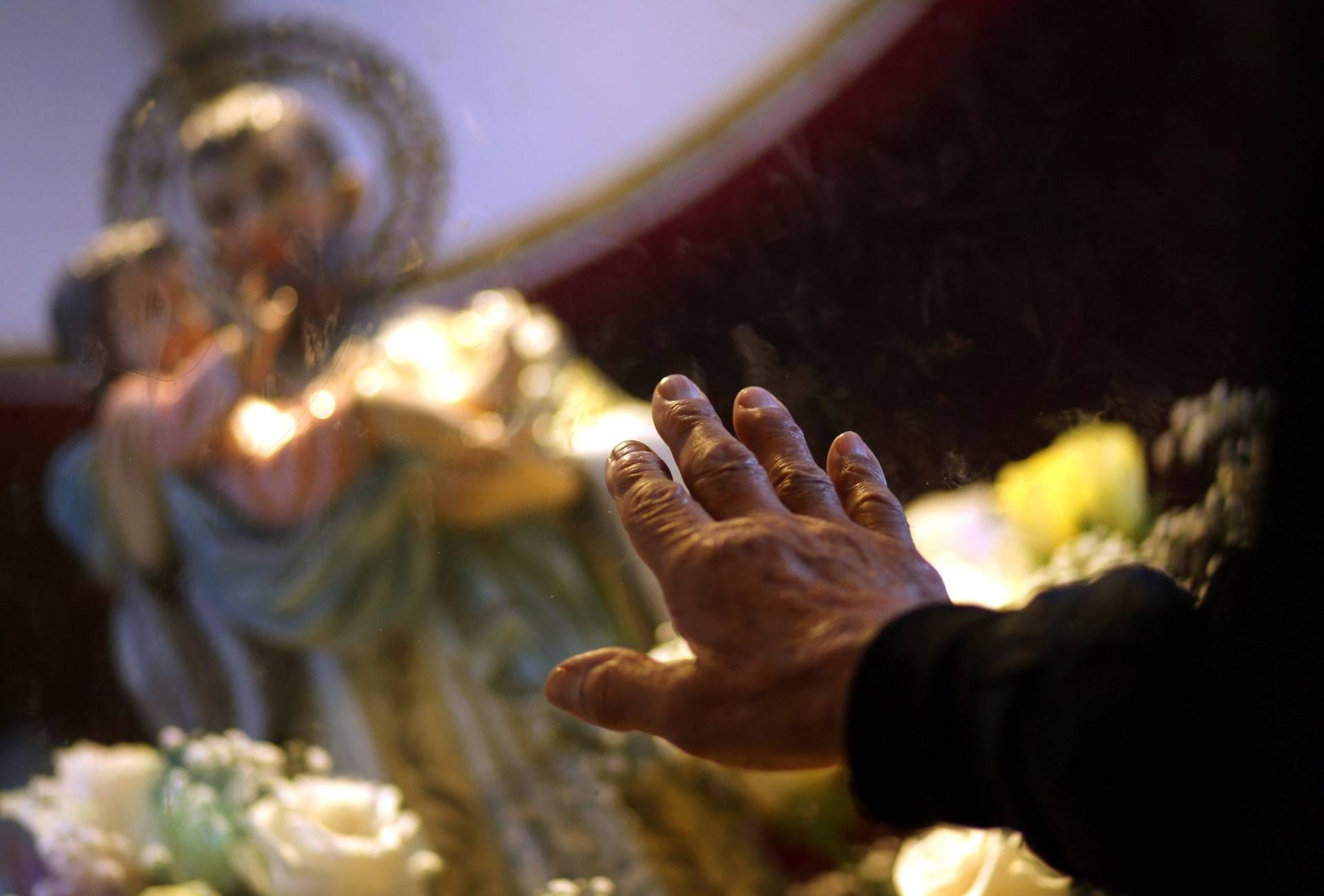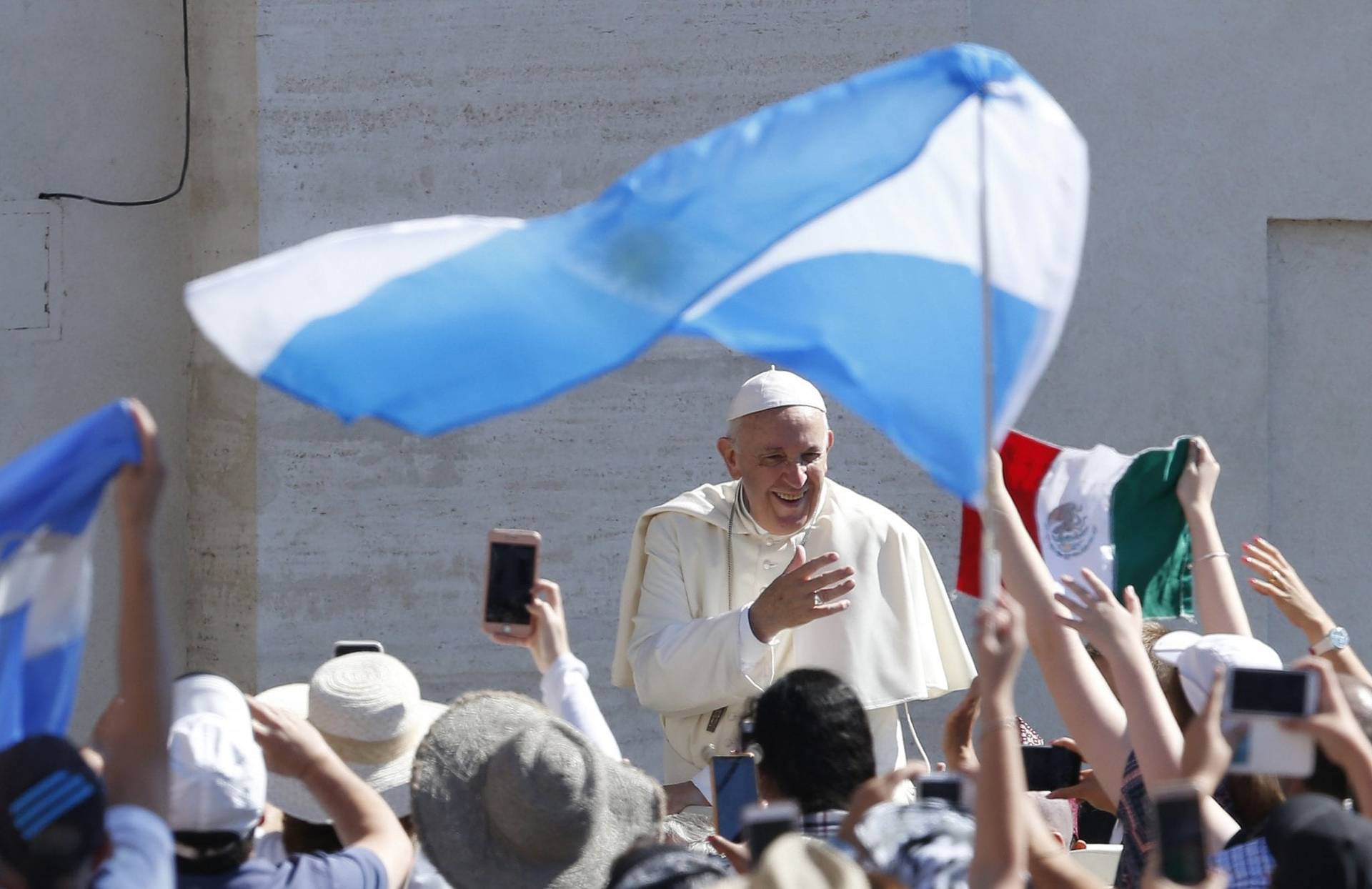[Editor’s note: This is the third part of a series on the villero priests, a group of close to 40 priests who live and work in Buenos Aires’s slums, exploring their work, their thoughts and the reality of the people living in the shantytowns where Pope Francis was known to spend much of his time when he was the archbishop of Argentina’s capital.]
BUENOS AIRES/ROSARIO, Argentina – Though full of life, the slums of Buenos Aires, where seven percent of the city’s population lives, are nobody’s idea of a fun place. Their inhabitants routinely experience crime and despair from the residue of what the state calls “structural poverty,” stemming from decades of corruption and mismanagement.
Yet there’s one word here that makes mothers and grandmothers shudder like no other: Paco.
Paco is not “El Chapo:” he’s no crime lord recruiting young boys for his private army. Nor is he a Don Juan, the fictional libertine who seduced countless young women, ruining the lives of many.
Nevertheless, paco has a militia of young men and women – some as young as 9 – known in the villas miseria as muertos vivientes, the living dead. Considered the cheapest illegal drug available in the streets of Buenos Aires, paco is what remains from the narco-kitchens producing cocaine bound for the United States and European markets.
It’s a highly addictive mixture of raw cocaine cut with chemicals, glue, crushed glass and rat poison. It’s sold in small transparent bags that in upper-class neighborhoods such as Recoleta or Puerto Madero are used to hold candies, and their price is not too different: with $1.50 you can buy two of Argentina’s famous dulce de leche-filled alfajores, or a paco fix in a slum.
In 2008, when then-Cardinal Jorge Mario Bergoglio, now known to the world as Pope Francis, tasked a parish in one of Buenos Aires’s largest slums, Villa 20-21, to open a center for rehabilitation for drug addicts, no one questioned the logic.
The first Hogar de Cristo, or “Christ Home,” opened its doors on Holy Thursday 2008, with a Mass in which the cardinal washed the feet of six young men and one young woman from the slum.
“I tried really hard to find twelve, but most were embarrassed to have their feet washed by the cardinal during a Mass,” said Father Carlos “Charly” Olivero. “Today, some of them regret saying no!”
“Bergoglio told us in that inauguration that the fight was going to be body-to-body, that we had to commit ourselves and that we had to welcome life as it came, but that it had to be every life,” Olivero told Crux. “We understand the problem of paco is a situation of serious social exclusion.”
Visibly tired, this 43-year old priest sits in one of the two chairs in the small room that serves as the priest office in the parish of Our Lady of Caacupe.
When he first arrived as a seminarian in 2002, the small room served as his bedroom. Back then, his mother would cry each time it rained: the roof on top of the 40-square-foot room, made of metal plaques, since has been replaced. Due to the many leaks, it did little to repel water.
Olivero had invited his parents to a parish celebration, hoping that his mother, seeing how the community loved the parish priests and “took care of us,” would stop worrying about her son. It backfired: “The first time she came to visit, it rained … my bed was wet, the floor was wet, there was water everywhere!”
Sporting a blue wool hat that does little to hide his curls, with his clerical collar unbuttoned and a polar sweatshirt with sleeves rolled up, his look bespeaks a man too busy to sit down for an interview. This was confirmed by the fact that during the 45 minutes he gave Crux, he was interrupted at least seven times by someone knocking on the door and received three phone calls, all of which he “needed to take.”
Olivero coordinates the Hogares de Cristo, of which there are 160 across the country. He gives an example of the people who knock on the San Alberto Hurtado hogar in Caacupe, named after a Chilean Jesuit who worked with the poor.
“[She was] a homeless girl who consumes paco. She’s forced into prostitution by the same people who sell to her. She has HIV and tuberculosis, no ID and three small children,” Olivero says. “When she’s pregnant, she can’t go to the hospital, because in the ‘best case,’ a social worker will take her baby. But often it’s the same drug lords, who give her cash and a few fixes and then sell the baby to someone else.”
She cannot be rescued with “traditional treatment, sending her to therapy.”
“Either you embrace the whole life of that girl, with all its challenges and difficulties, or nothing will come out from your efforts,” Olivero argued. “You have to look at the whole of the person: help them recover from the addiction, but also give them formation so they can find employment, trust them with money, help them get an ID, a home, even give them a family.”
No matter how complicated the case, no matter the age or sex of the person who knocks on the door, no one is sent away. This, Olivero insists, is something Bergoglio would tell them often: “Every life is worth the effort.”
“We eventually understood that welcoming every life is a way of welcoming God, because it’s the principle of incarnation,” he said.
The number of people who’ve been helped since the hogar opened is hard to pin down, but many of those who were helped have since become helpers, volunteering in the institution, going on missionary trips where they help the mentally infirm, or feeding the homeless every Monday night.
San Alberto Hurtado was meant to be the first and only Hogar de Cristo. But seeing that the threat of paco and other drugs wasn’t exclusive to the Villa 20-21, together with Father Gustavo Carrara (today an auxiliary bishop of Buenos Aires), Olivero asked Bergoglio if they could expand.
“Keep moving forth” is what the priest recalls the future pope telling them, despite the fact that the decision to plant such a flag could be read as a political one, a statement from the Catholic Church to drug lords saying “we’re here too.”
With the growth of the Hogares de Cristo they began to become systematized, with the help of Caritas, a pontifical charity, and the National Addiction Pastoral Ministry. They also joined forces with the state to try to guarantee resources, particularly in places that are even poorer than the slums of Buenos Aires.
The mother of the slum
The image of Our Lady of the Miracles of Caacupe, patroness of Paraguay, arrived in the slum 22 years ago, in response to the fact that a majority of those who live here come from that country.
Placed in a small altar outside of the church, it’s visible to everyone and always adorned with mismatched flowers, rosaries and messages left by the faithful. It was placed there 22 years ago, decaded after Father Daniel de la Sierra first arrived.
“Caacupe is the mother of the neighborhood,” Olivero says. “When de la Sierra arrived in the 1970s, there were a few people living here. He built the church, brought people together.”
De la Sierra arrived in 1976. During Argentina’s last military coup, there was an attempt to forcibly eradicate the slums, but he would stand up to the bulldozers sent to destroy the homes of the people in an attempt to dissuade them from staying: the military’s housing solution meant putting the men, women and children in trucks after destroying their meager belongings and abandoning them along the highway near Gonzalez Catan, an overcrowded city some 20 miles from Buenos Aires.
“The parish organized the neighbors, and amidst catechesis, Masses, and the sacraments, organized the resistance, defending the people, their rights and their dignity,” Olivero said. “The parish at the time was on the side of the suffering people, so today, it’s seen as the mother of the slum, the place where life is born, fostered, accompanied.”
Though the government no longer attempts to eradicate slums with bulldozers, the parish continues to be the place where people receive the sacraments and also where they look for help: “If a mother sees her son is good playing soccer, they come here, asking if we can find him a team!”
De la Sierra used to bike around the neighborhood, dressed in black and singing. He was known as “the angel on the bicycle.”
He was tragically killed by a truck while he was riding his bike in 1992, but the memory of him is still very much alive in Caacupe, where his remains have been since 2002. One of the walls of a sports center adjacent to the parish he built has a mural with his face, and the white bike he rode hangs in an upper corner.
Today, the Villa 20-21 has 160 acres and is home to 85,000 people. The parish has missionary centers, a kindergarten, a primary and secondary schools, several soup kitchens, a hospital, a trade school and the Hogar de Cristo.
Olivero says he has “no idea” of the monthly budget of Caacupe, but acknowledges that there are “many resources” that come from private donors, agreements with the state and, above all, commitment from neighbors themselves.
“The lay people are the engine of the entire operation,” he said. “They come here looking for help, but they give it back whenever they can, in whatever form they can.”
Olivero said the Church sometimes can succeed where the government fails.
“The state comes here, opens an office of mental health to treat people with addictions and it’s empty,” Olivero said. “There’s no bond, no willingness to remain, to treat life integrally. That social thread that you find in the parish is missing.”
For this reason, he believes that a campaign seen last year during a national debate over abortion, calling for the division of church and state, is “political speech” that doesn’t penetrate the shantytowns.
“What does it mean to separate church and state in a slum? That they cut subsides of parish schools when the government has one educational center for 85,000 people? That they cut subsidies for soup kitchens or the hospital? They’re slogans, speeches to create havoc, but we’re a part of the solution.”
“If a community organized around faith is part of the long-term solution to social exclusion, drug addiction and poverty, trying to sever that bond would lead to nothing but resounding failure,” Olivero said. “And we all know this.”
Follow Inés San Martín on Twitter: @inesanma
________________________________________________
Crux is dedicated to smart, wired and independent reporting on the Vatican and worldwide Catholic Church. That kind of reporting doesn’t come cheap, and we need your support. You can help Crux by giving a small amount monthly, or with a onetime gift. Please remember, Crux is a for-profit organization, so contributions are not tax-deductible.

















